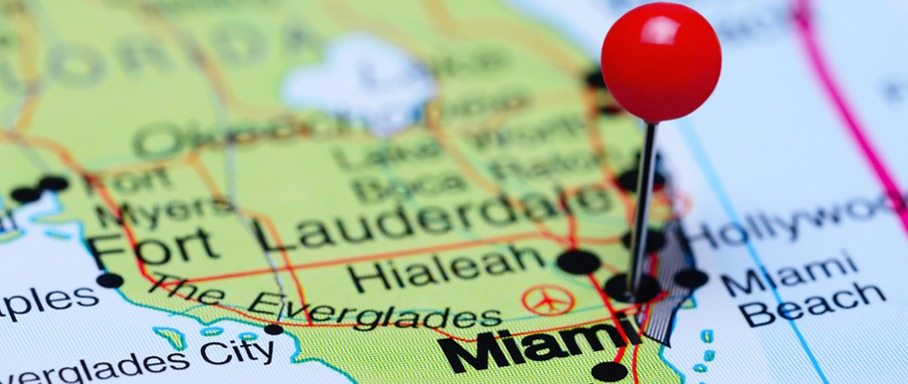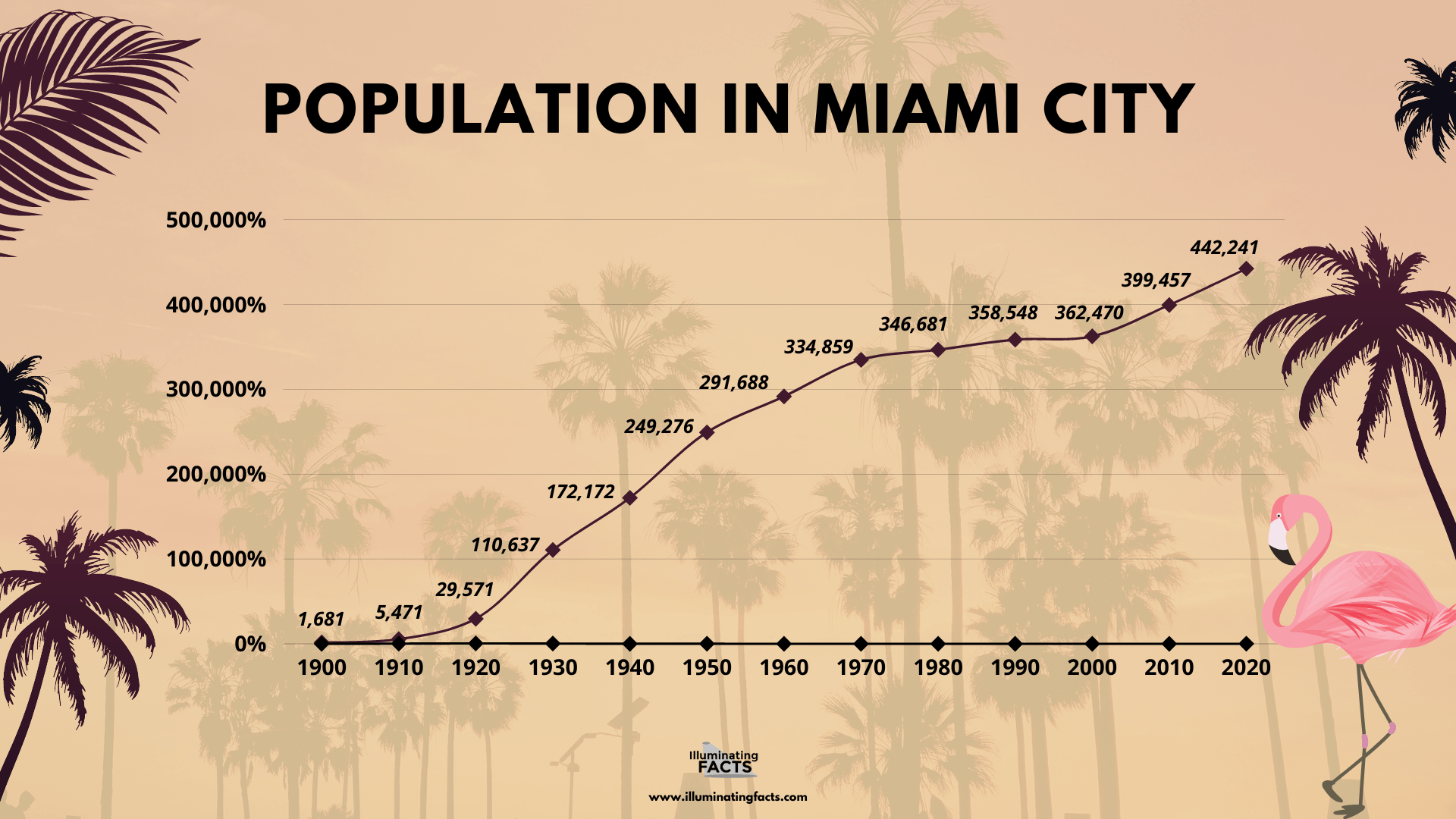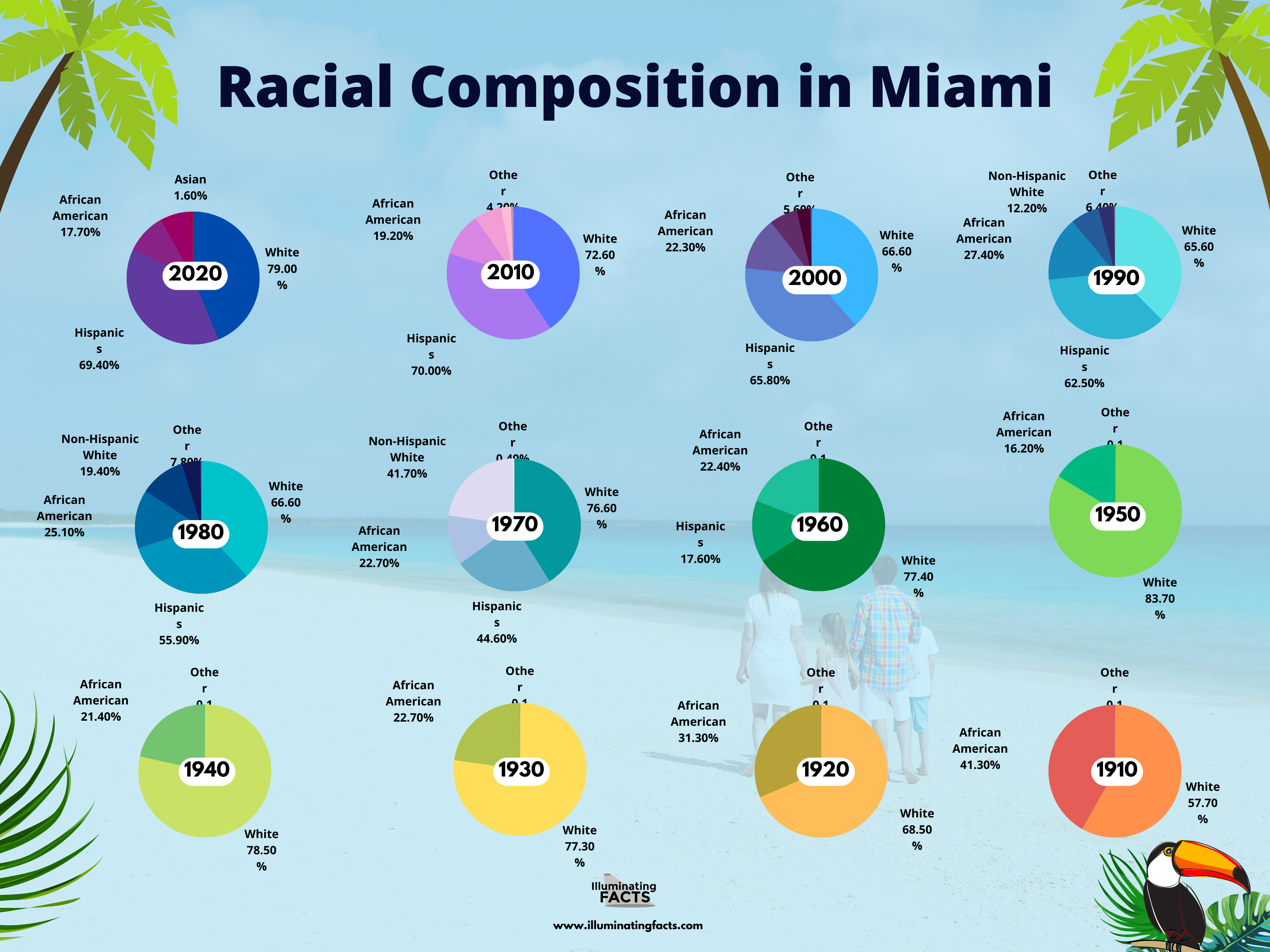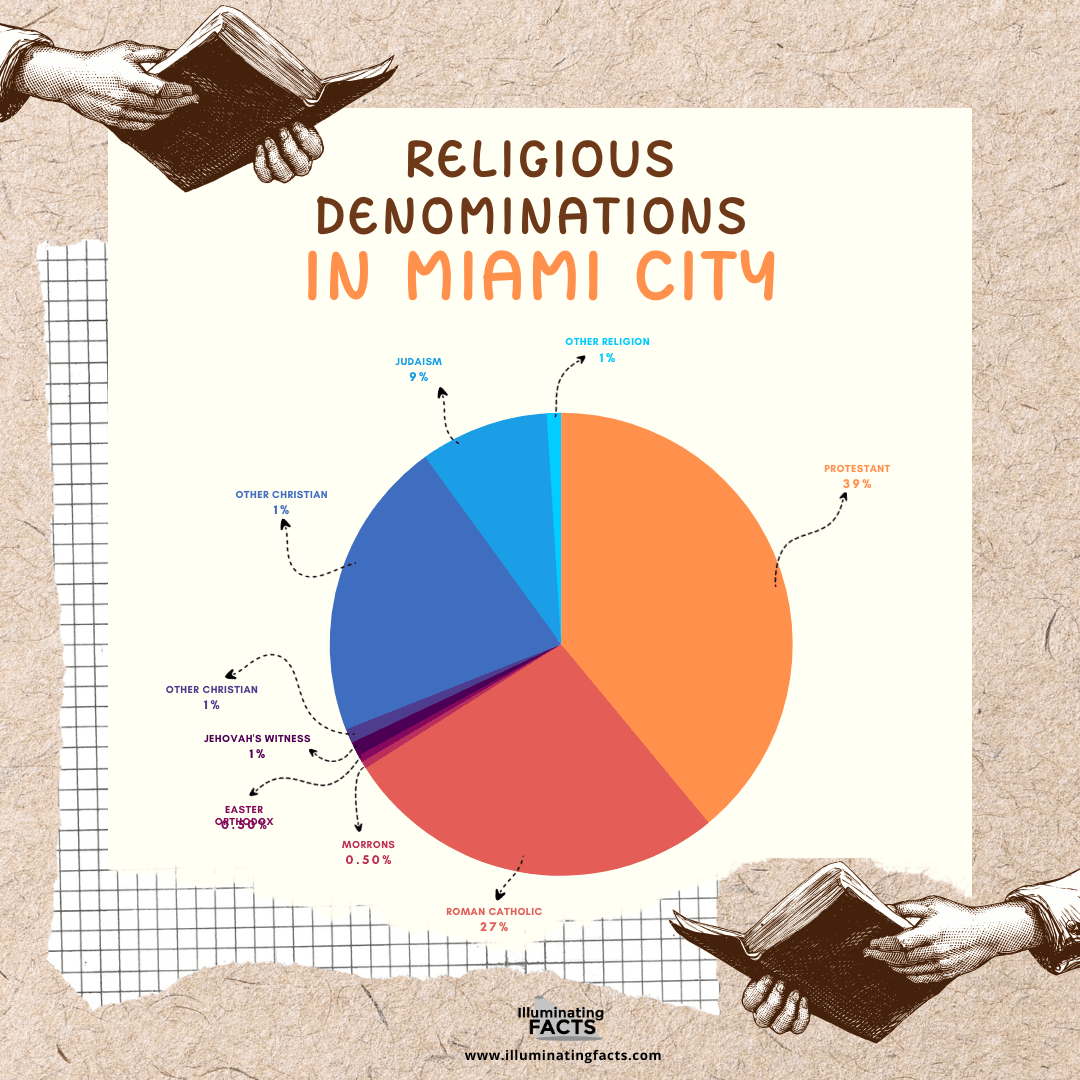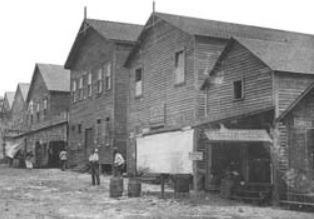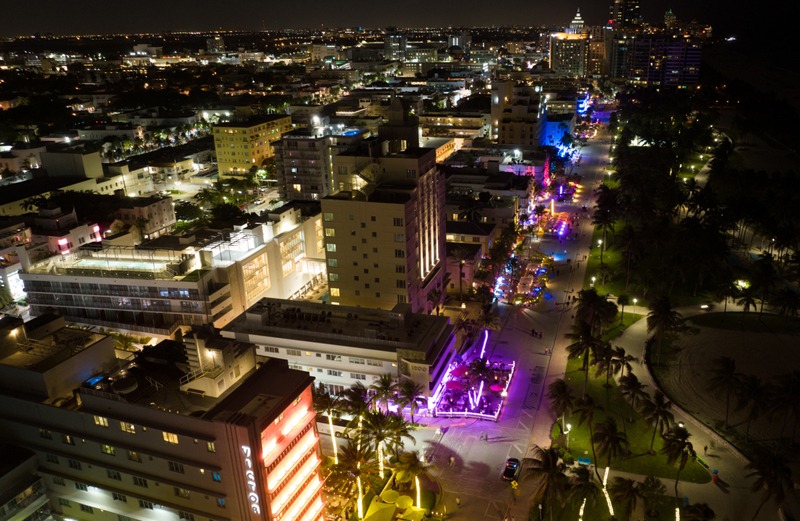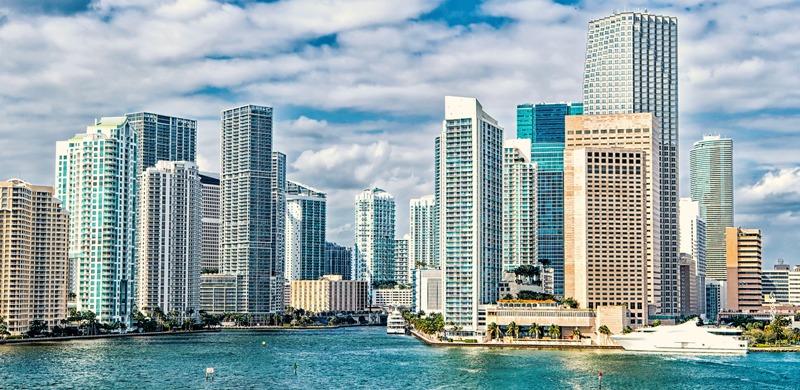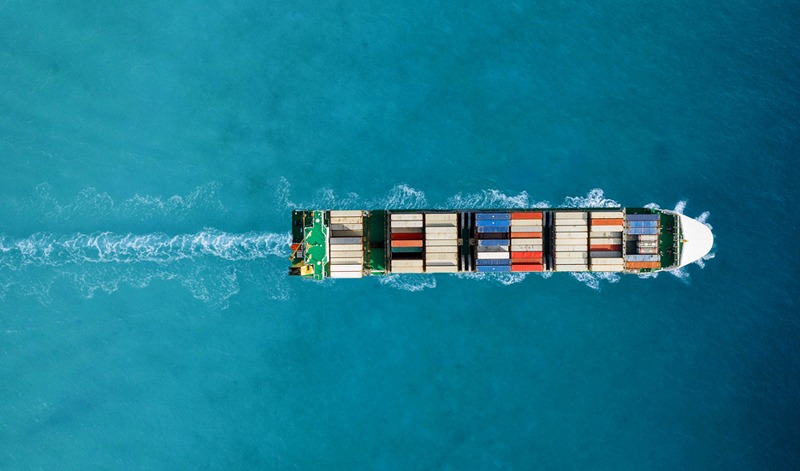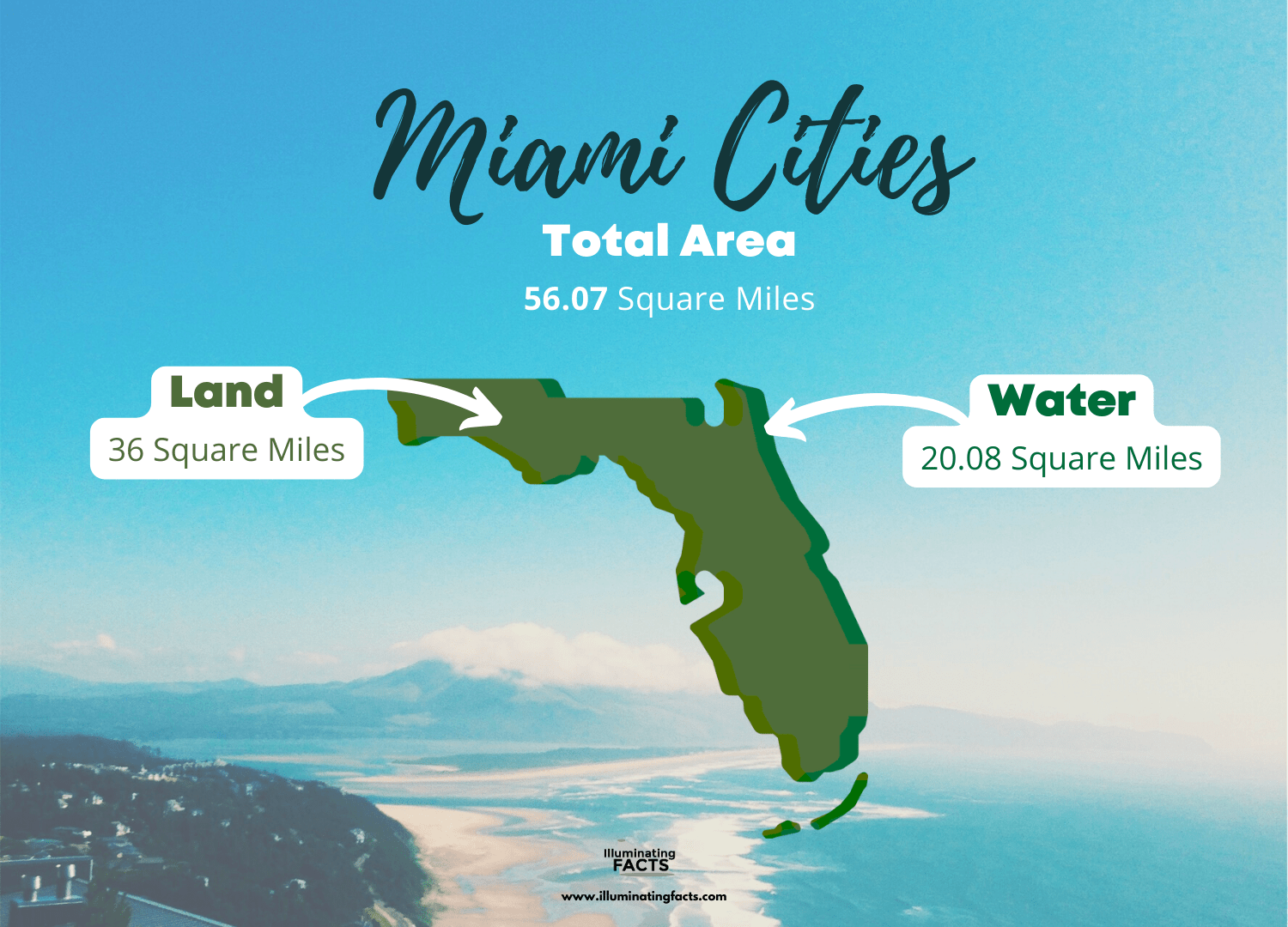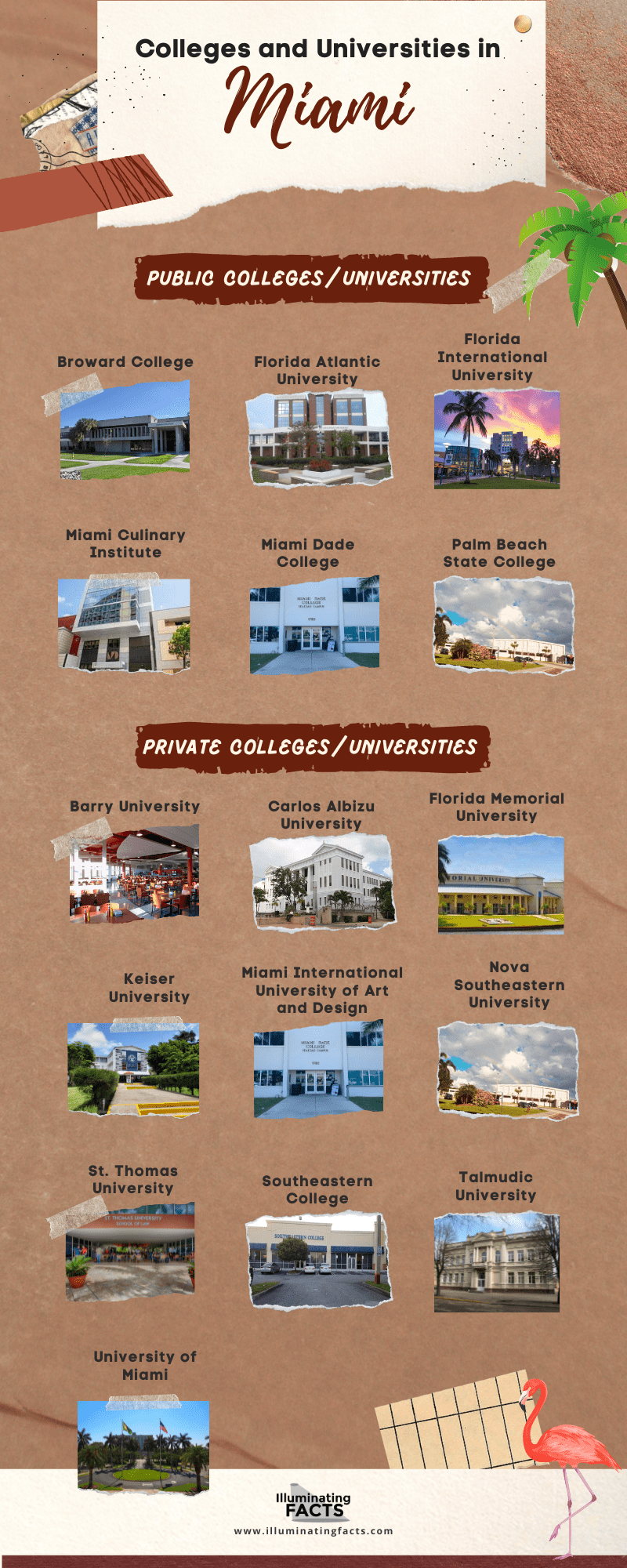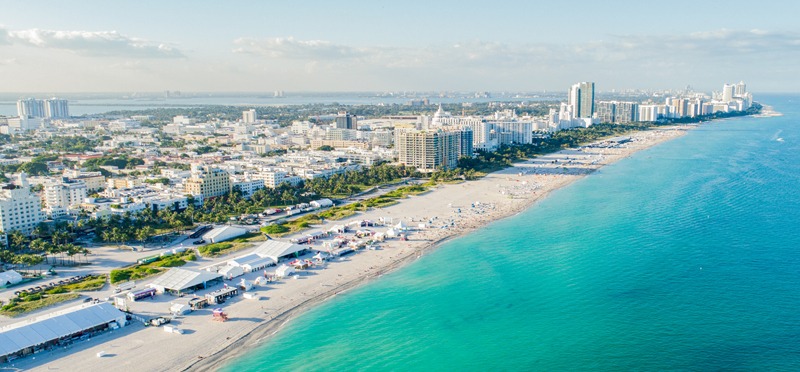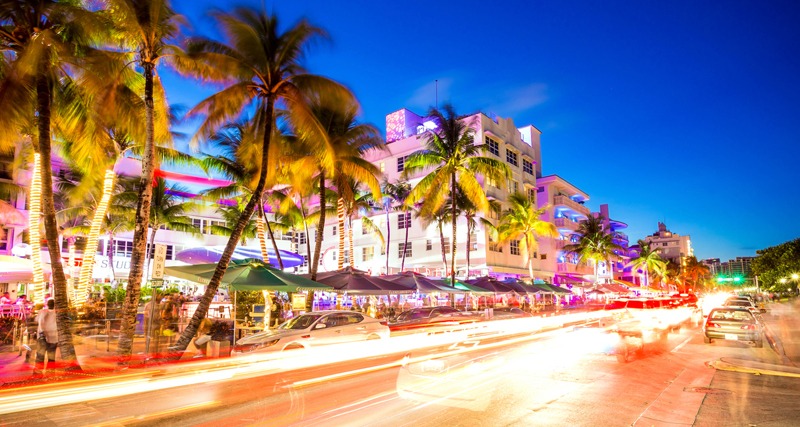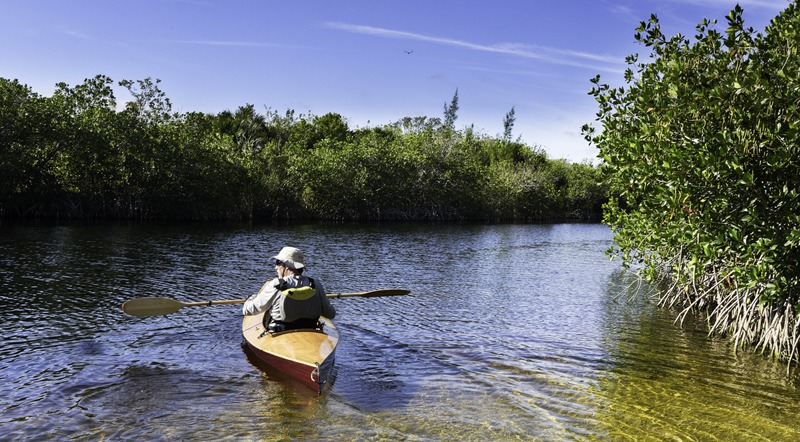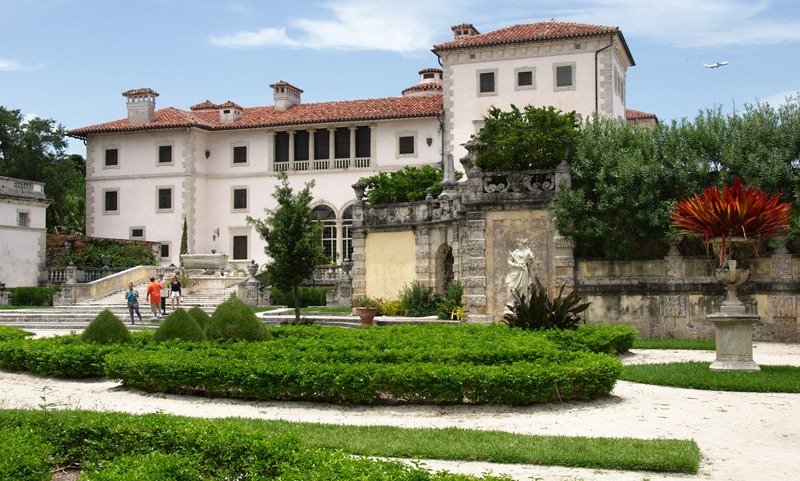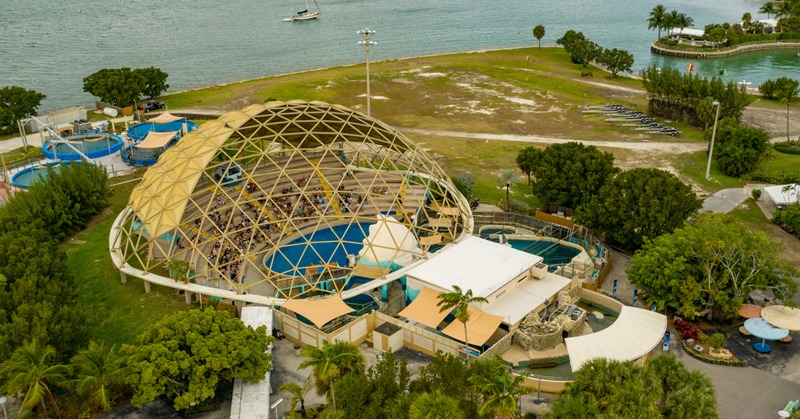Background
Miami, or the City of Miami, also called the Vice City, is a metropolis located in southern Florida, United States. [1] It is a coastal metropolis that is made up of 467 936 population, making it the 44th among the largest cities in the U.S.
Moreover, the city of Miami is majorly known as the center of commerce, finance, international trade, as well as culture, and the arts. [2] In fact, in a 2020 report, Miami was classified as a Beta + Level global city according to Globalization and World Cities Research Network or GaWC. [3] Cities on the Beta level connect modest economic regions to the global economy. It is divided into three categories: Beta +, Beta, and Beta cities.
[4] In 2017, Miami had a reported GDP of $344.9 billion. Miami is also by far the largest urban economy in the state of Florida and the 12th largest in the U.S. [5] Meanwhile, in a 2019 report, Miami has been ranked 7th in the United States and 31st among cities around the world in human capital, business activities, political engagement, as well as in cultural experience.
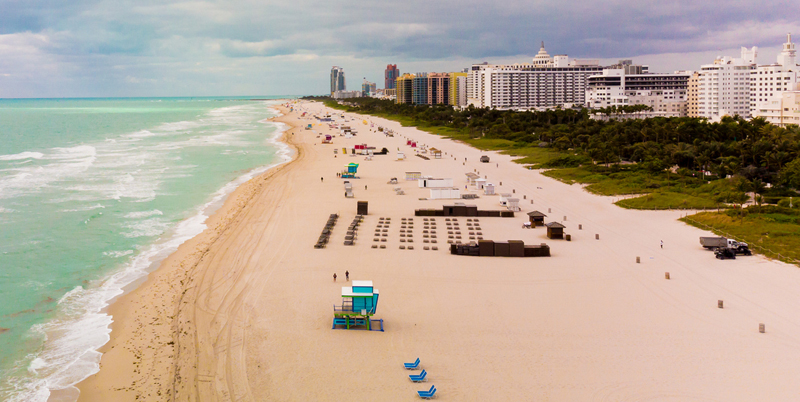
Aerial view of the South Florida beach
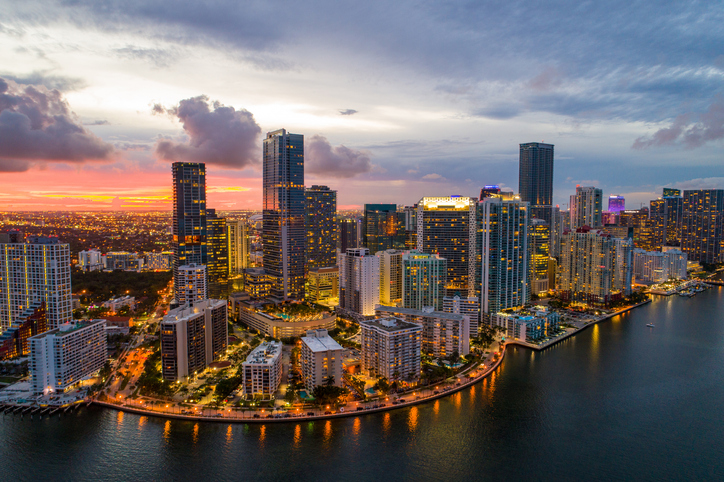
A photo of Miami Downtown at night
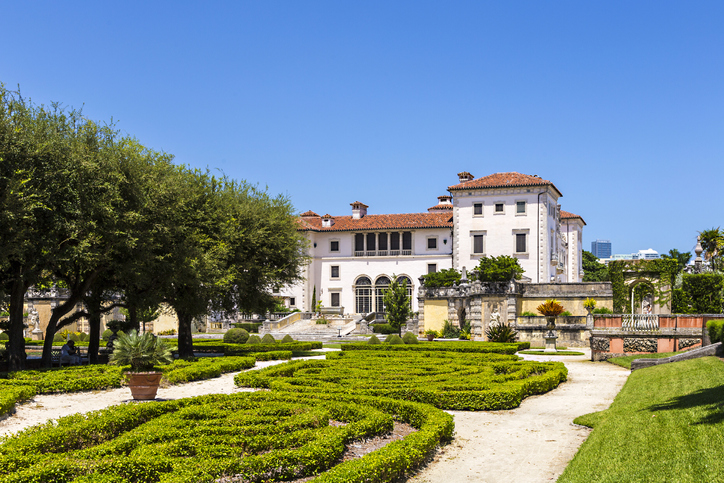
Vizcaya Museum and Gardens
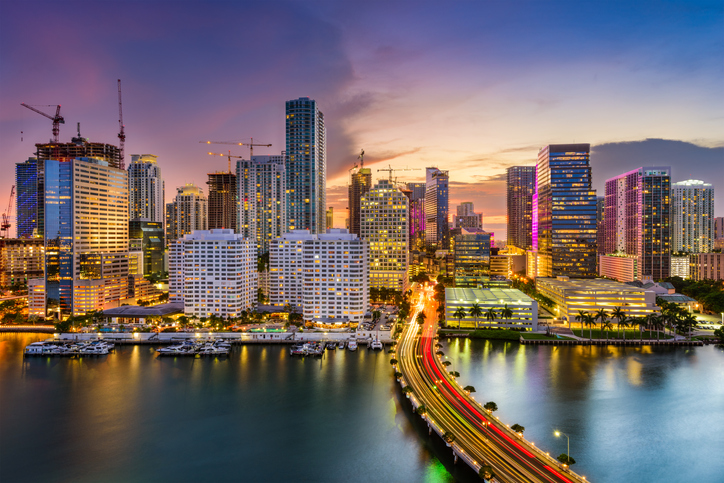
A photo of the Miami skyline
[6] Also nicknamed the “Capital of Latin America,” Miami was ranked as the eighth-richest among the 77 world cities regarding purchasing power. Additionally, in the 2020 report, with a 70.2 percent Hispanic population, Miami has become the fourth-largest majority-Hispanic city in the United States.
[7] Greater Downtown Miami, an urban city center, also has concentrations in international banks and even large international companies. Some of the biggest companies were in the Health District, which is the home of a major center for hospitals, biotechnology, and medical research industries.
[8] Miami is also where you can find Port Miami. Port Miami, dubbed the “Cruise Capital of the World,” is the world’s busiest cruise port in terms of cruise lines and passenger traffic. [9] Interestingly, aside from the Miami Port, the third-largest skyline in the United States, which exceeds about 491 feet in height, can also be found in Miami.
Population in Miami City
| Year | Population | Growth Percentage |
| 1900 | 1,681 | – |
| 1910 | 5,471 | 225.50% |
| 1920 | 29,571 | 440.50% |
| 1930 | 110,637 | 274.10% |
| 1940 | 172,172 | 55.50% |
| 1950 | 249,276 | 44.80% |
| 1960 | 291,688 | 14.00% |
| 1970 | 334,859 | 14.80% |
| 1980 | 346,681 | 3.50% |
| 1990 | 358,548 | 3.40% |
| 2000 | 362,470 | 1.10% |
| 2010 | 399,457 | 10.20% |
| 2020 | 442,241 | 10.70% |
Population in Miami City
Racial Composition
Race | 2020 | 2010 | 2000 | 1990 | 1980 | 1970 | 1960 | 1950 | 1940 | 1930 | 1920 | 1910 |
White | 79.00% | 72.60% | 66.60% | 65.60% | 66.60% | 76.60% | 77.40% | 83.70% | 78.50% | 77.30% | 68.50% | 57.70% |
Hispanics | 69.40% | 70.00% | 65.80% | 62.50% | 55.90% | 44.60% | 17.60% | - | - | - | - | - |
African American | 17.70% | 19.20% | 22.30% | 27.40% | 25.10% | 22.70% | 22.40% | 16.20% | 21.40% | 22.70% | 31.30% | 41.30% |
Non-Hispanic White | 12.90% | 11.90% | 11.80% | 12.20% | 19.40% | 41.70% | - | - | - | - | - | - |
Other | - | 4.20% | 5.60% | 6.40% | 7.80% | 0.40% | 0.1 | 0.1 | 0.1 | 0.1 | 0.1 | 0.1 |
Asian | 1.60% | 1.00% | 0.70% | 0.60% | 0.50% | 0.30% | - | - | - | - | - | - |
Table showing Miami City’s racial composition
Religion
| Religion | Percentage |
| Protestant | 39% |
| Roman Catholic | 27% |
| Mormons | 0.50% |
| Easter Orthodox | 0.50% |
| Jehovah’s Witness | 1% |
| Other Christian | 1% |
| No Religion | 21% |
| Judaism | 9% |
| Other Religion | 1% |
Chart showing the various religious denominations in Miami City
History
Before European contact, the Tequesta tribe lived in the area around Miami for almost 2,000 years. At the mouth of the Miami River, hundreds of people lived in a community that dates back to 500–600 B.C. [10]. However, by the mid-1700s, it is thought that the whole tribe had then relocated to Cuba.
Florida’s first governor, admiral Pedro Menéndez de Avilés, claimed the territory for Spain in 1566. Subsequently, a year later, a Spanish mission was built. Afterward, Spain and Britain alternated as rulers of Florida until 1821, when Spain handed it up to the United States. As part of their expansion of the Florida Territory and their attempt to subdue and eliminate the Seminoles, the United States built Fort Dallas on the banks of the Miami River in 1836. As a result, during the Second Seminole War, the Miami area became a battleground.
[11] Miami is notable for being the United States’ only major metropolis founded by a woman. The land where the city was built was originally owned by Julia Tuttle, a wealthy Cleveland native and a local citrus grower. Back then, in the 19th century, the area was known as “Biscayne Bay Country,” and reports described it as “one of the finest building sites in Florida.”
As well as another notable moment that brought Miami to what it is today is the Great Freeze of 1894–95. It is said that it accelerated Miami’s expansion since its crops were the only ones that survived in Florida.
In the early days of Miami’s growth, African American labor has become one of the contributors to the city’s development. In fact, during the earlier times of the 20th century, migrants from the Bahamas and African-Americans made up 40% of the city’s population. However, despite their importance in the city’s expansion, their community was confined to limited space.
When landlords started renting properties to African-Americans along Avenue J, now N.W, fifth Avenue, a band of white men with torches marched through the neighborhood, warning residents that they would be bombed if they did not relocate.
Moreover, its strategic location made Miami a base for American defense against German submarines when World War II broke out. With that, Miami’s population grew. In the 1940s, the city had 172,172 residents.
[12] Following that, Miami, which then was called “the magic city,” stems from its rapid expansion, which has been remarked by winter tourists who have commented that the city has grown so much from year to year that it appears magical.
Economy
Economic Growth
Miami is one of the important financial and commercial centers with a thriving international corporate community. [1] Also, its Gross Metropolitan Product (GMP) is $257 billion, placing it 11th in the United States and 20th globally. [2] In fact, according to the Globalization and World Cities Research Network’s (GaWC) 2020 ranking of world cities, Miami, along with Atlanta, Dallas, and Houston, is a Beta + level world city. This report was taken in terms of the level of presence of global corporate service organizations.
[3] However, according to the census, from 2015 to 2019, Miami lacks computer and internet usage, owner-occupied housing, bachelor’s or higher degree education, per capita income, and median household income.
Interestingly, many large companies are headquartered in Miami. Some of these are Akerman LLP, Alienware, OPKO Health, Southern Wine & Spirits, Vector Group, and Watsco and World Fuel Services. [4] In addition to that, many major global organizations, including Walmart, have their Latin American operations or regional offices in Miami, Florida.
Other companies are also based in nearby cities or unincorporated areas of Miami-Dade County, including Burger King, Navarro Discount Pharmacies, Carnival Cruise Line, Ryder, Sedano’s, and the United States Century Bank.
Media
Miami is a significant television production center and the most important Spanish-language media city in the United States. In fact, the headquarters of Telemundo and UniMás are located in Miami. Telenovelas, news, talk shows. and sports are among the original content produced by Univisión Studios and Telemundo Studios for their respective parent networks. [5] In 2011, Telemundo filmed about 85% of its original programming in Miami.
Aside from that, Miami is also a major music recording center. It is the headquarters of several smaller record firms and the leading Latin music record label, Sony Music Latin. Moreso, many musicians flock to the city for music videos and film shoots.
Real Estate
[6] The city’s largest real estate boom since the 1920s Florida land boom occurred in the mid-2000s. During that moment, over a hundred authorized high-rise development projects were approved. However, only fifty were then erected.
These rapid high-rise developments resulted in fast population expansion in Miami’s inner neighborhoods, with Brickell, Downtown, and Edgewater emerging as the city’s fastest-growing areas. Miami city now possesses the state’s seven highest and fifteen of the top twenty buildings, with Panorama Tower being the tallest – 265 meters.
[7] Subsequently, the area experienced a foreclosure crisis following the property market crash of 2007. [8] In 2012, Forbes magazine dubbed Miami “the most miserable city in the United States” due to the crushing housing crisis that robbed many inhabitants of their homes and jobs.
[9] In addition, the metropolitan area has one of the highest crime rates in the country, and workers face long daily commutes. However, like in other U.S. metro areas, crime in Miami city is localized to certain neighborhoods. Additionally, according to the 2016 study made by 24/7 Wall Street, Miami was ranked as the worst U.S. city to live in. The report was based on poverty, crime, education, income inequality, and housing costs far exceeding the average.
Miami Ports
Miami International Airport (MIA) and Port Miami are two of the busiest ports of entry in the United States. [10] Port Miami is known as the busiest cruise port, particularly for cargo coming from the Caribbean and South America. Meanwhile, Miami International Airport (MIA) is the largest gateway between the United States and Latin America.
[11] The Port of Miami, one of the largest ports in the United States, is the world’s largest cruise ship port. Also, it is known as the “Cruise Capital of the World” and the “Cargo Gateway of the Americas.” Over a decade, it has remained the world’s top cruise/passenger port hosting the world’s largest cruise ships and major cruise lines. As mentioned, the port is also one of the busiest cargo ports in the country. [12] In fact, in 2017, the port had imported about 9,162,340 tons of cargo and served 5,340,559 cruise passengers.
Because of the city’s strength in finance and trade, as well as in international businesses, Miami has one of the country’s highest concentrations of foreign banks, particularly in Miami’s financial sector. Interestingly, the 2003 Free Trade Area of the Americas negotiations were held in Miami.
Employment and Unemployment Rate
[13] In September, total nonfarm employment in the Miami metropolitan region increased by 119,200 over the previous year, according to the United States Bureau of Labor Statistics. Also, regional Commissioner Janet S. Rankin pointed out that the local job growth rate was 4.8%, compared to a national rate of 4.0%.
Moreover, Leisure and hospitality grew the most among local private-industry supersectors in Miami. In fact, it grew by 22.5% in the metropolitan area, compared to the national rate of 14.6%. Meanwhile, the food and accommodation services sector contributed 44,200 jobs to this supersector.
In the metro area, professional and business services added 23,000 jobs last year. The Miami-Miami Beach-Kendall division added 17,600 jobs, representing 77% of the total job growth in the metropolitan area. In the business and professional services supersector, the metropolitan area increased by 5.3%, compared to 5.4% nationally.
Over the year, the trade, transportation, and utility supersector added 19,600 jobs, while the other services supersector added 8,800.
As of September 2021, the unemployment rate in Miami, FL, is 5.70%, down from 6.70% last month and 13.10 percent a year ago. This is lower than the 7.53% long-term average.
Government
| Area | Square Miles |
| Land | 36 |
| Water | 20.08 |
| Total | 56.07 |
Table showing Miami City’s total area
Miami’s government uses the mayor-commissioner system. In this type of system, five commissioners are elected from single-member districts to make up the city commission. The city commission is the governing body and has the authority to enact ordinances, adopt rules, and exercise all of the rights granted to the city under the city charter. Moreover, the mayor is chosen by the entire city, while the city manager is appointed by the mayor. Currently, Mayor Francis Suarez and five city commissioners administer Miami city.
The commission meets regularly at Miami City Hall, located at 3500 Pan American Drive, Dinner Key, in the Coconut Grove area. Also, as of 2022, Republican Maria Elvira Salazar and Democrat Frederica Wilson represent Miami in the U.S. House of Representatives.
Below is the table showing Miami’s City Commission:
Education
Number of Students in Preschool to College
According to the 2015 to 2019 report, 78% of Miami’s population over the age of 25 had a high school diploma. Meanwhile, those who have bachelor’s or higher degrees were held by 29.6% of Miami residents.
Primary and Secondary Schools in Miami
Families who are considering migrating or living in another place have factors to consider, such as their children’s education. They evaluate not just the availability of schools in the area but also the quality of these institutions. When it comes to the best schools, Miami has a large number of private and public schools from which parents can choose.
Miami-Dade County Public Schools is the fourth-largest school district in the United States. It is also the largest school district in Florida that oversees public schools in the city.
It has 385,655 students enrolled in approximately 392 schools and facilities as of September 2008. With 60% of its students being Hispanic, 28% being Black or West Indian American, 10% being White (non-Hispanic), and 2% being non-white of other minorities, the district is considered the country’s largest minority public school system.
Although Miami’s education system has successfully brought its education into the digital age, it also has a history of struggles. These struggles, as well as challenges, include student overpopulation and funding shortage in some specific schools. Nevertheless, Miami is still the home to some of the best schools in the United States. Moreover, it is also one of the few public school districts in the U.S. to offer bilingual education in French, Spanish, Haitian Creole, German, and Mandarin Chinese.
Interestingly, one of the M-DCPS schools, Design and Architecture High School, was ranked the nation’s best magnet school. Meanwhile, Coral Reef High School, MAST Academy, Miami Palmetto High School, and the New World School of the Arts all ranked the 20th-best public high school in the United States.
Several notable Jewish, Catholic, and non-denominational private elementary and high schools can also be found in Miami. The Archdiocese of Miami is responsible for the city’s Catholic private schools, which include St. Agatha Catholic School, St. Hugh Catholic School, St. Theresa School, Monsignor Edward Pace High School, Immaculata-Lasalle High School, St. Brendan High School, and Archbishop Curley-Notre Dame High School, among others.
Christopher Columbus High School and Belen Jesuit Preparatory School for boys, Our Lady of Lourdes Academy, and Carrollton School of the Sacred Heart for girls are Catholic preparatory schools run by religious communities.
Meanwhile, Ransom Everglades, Miami Country Day School, and Gulliver Preparatory School are some of the non-denominational private schools in Miami. Other schools in the neighborhood include Riviera Schools, Samuel Scheck Hillel Community Day School, Palmer Trinity School, Dade Christian School, and Westminster Christian School.
Colleges and Universities in Miami
Below is the list of Public and Private Colleges and Universities in Miami, Florida:
| Public Colleges/Universities | Private Colleges/Universities |
| Broward College | Barry University |
| Florida Atlantic University | Carlos Albizu University |
| Florida International University | Florida Memorial University |
| Miami Culinary Institute | Keiser University |
| Miami Dade College | Miami International University of Art and Design |
| Palm Beach State College | Nova Southeastern University |
| St. Thomas University | |
| Southeastern College | |
| Talmudic University | |
| University of Miami |
[3] Figure 3: List of Private and Public Colleges and Universities in Miami, Florida
Miami-Dade County has about 200,000 students enrolled in local colleges and universities. With that, it was ranked seventh in the nation in terms of per capita university enrolment. [4] Moreover, in the year 2010, more than 28,000 students graduated from the city’s four largest colleges and universities – Miami Dade College, Florida International University, University of Miami, and Barry University.
[5] Moreover, for-profit and charity organizations provide a variety of professional training and other related educational programs in Miami. In fact, one of those educational programs is Per Scholas. Per Scholas is a nonprofit organization that provides free professional certification training aimed at passing CompTIA A+ and Network+ certification exams to gain jobs and advance one’s career.
Tourist Spot In Miami
Miami is one of the places that many people love to visit. This place has a great vacation destination for those who love traveling. Aside from having a beautiful view, it also has excellent beaches and parks that you can freely enjoy.
The other places here are not only good for a day. You can also enjoy at night aside from a tropical vacation in Miami. Here are some tourist spots that you can visit in Miami.
1. City of Miami Beach
Miami Beach is a south Florida City Island that connects to the bridge of mainland Miami. This place became an entertainment and cultural destination. Aside from the beautiful scenery that you can see on the site, it is also open for businesses who want to start their job in the city.
2. South Beach
The beach is more fun to visit at night because of the glamorous scenery. The place also has fantastic Art Deco architecture around the coast shown by David Brauer, which you can also learn from the definitive history of the art.
3. Everglades National Park
The Everglades is the third largest park in the country, with 1.5 million-acre wetlands preserved on the southern tip of Florida after Yellowstone and Death Valley. We should not be worried about the animals because the park protects the entire ecosystem, including the endangered or threatened, like American crocodiles.
4. Vizcaya Museum and Gardens
This place is perfect for having a walk while embracing the ambiance and peaceful surroundings. You can also see some areas here that are seen in the films like Tony Rome, Ace Ventura: Pet Detective, Any Given Sunday, Bad Boys II, Airport ’77, Haunts of the Very Rich, The Money Pit, The Champ, This Thing is Ours, Daring Game and Iron Man 3 and take some pictures with your love ones.
5. Miami Seaquarium
Miami Seaquarium is the oldest underwater museum in the United States, with a 38-acre located on the island of Virginia Key in Biscayne Bay, Miami-Dade County, Florida, United States, and is near downtown Miami where you can see dolphins and other ocean creatures. One of the main attractions of this place is Lolita, the oldest orca in captivity.
These are some tourist spots that you can visit around Miami. Try to do some research about the place for more destinations.
Interesting Facts About Miami
Because of the beautiful places you can see in Miami, they welcome over 14 million tourists annually to enjoy the area. Aside from the beautiful places around, you can also do other things in the city. Continue reading this article for more exciting facts about Miami.
- Others usually mistake Miami as the capital and the largest city of Florida. It came from the name “Mayaimi” tribe when the Europeans colonized the Americas and Florida. Several Native American tribes lived by lake Mayaimi, which is known as Lake Okeechobee.
- Miami was from scratch and became a rapid growth. That’s why it is called Magic City. Aside from the structures in Miami, you can enjoy the surroundings more because of the fantastic climate and marketing purposes to attract the northerners.
- Another exciting thing about Miami is that it is the only U.S. city bordered by two national parks; the Everglades and Biscayne National Park. You can travel less than one hour away from the Everglades and Biscayne National Park, which is perfect for getting away from the city.
- Miami has a lot of things that we can learn because of the considerable area it has. It is the cruise port capital of the world and the most modern cruise that welcomes passengers and cargo boats or even to get more to explore. Also, Miami is the second busiest airport in Florida, with almost forty-four million passengers per year.
It seems that Miami is a truly ideal destination to visit because of the many activities to offer. Regardless of these places we can enjoy, Miami has an exciting and encouraging story that is good to learn for everyone. For more destinations, research to look for more beautiful places around Miami that you and your loved ones will surely love.
Final Thoughts
Miami City is undoubtedly one of the most popular and greatest cities in the United States. It is a fast-growing economy home to various businesses within its area. In addition, studying in Miami offers several choices from primary to secondary schools and universities.
Moreover, another feature that makes Miami City a unique place to visit is its tourist spots, mainly its world-famous beaches. Miami is home to several beaches that will give everyone a great time.
Sources
- U.S. Census Bureau QuickFacts: Miami city, Florida
- Wayback Machine (archive.org)
- Colleges & Universities Near Miami, Florida | 2021 Best Schools (franklin.edu)
- Jobs, education and Miami-Dade’s future – Editorials – MiamiHerald.com (archive.md)
- Wayback Machine (archive.org)
- Wayback Machine (archive.org)
- GaWC – The World According to GaWC 2020 (lboro.ac. U.K.)
- U.S. Census Bureau QuickFacts: Houston city, Texas; Atlanta city, Georgia; Dallas city, Texas; Miami city, Florida
- Walmartstores.com: Walmart Latinoamérica Opens New Regional Office in South Florida, Introduces New Regional President and CEO Eduardo Solórzano (archive.org)
- Telemundo Plans To Tape 1100 Hours Of Telenovelas In Miami – Miami Today (miamitodaynews.com)
- Miami | Buildings | EMPORIO
- Boom of condo crash loudest in Miami — OrlandoSentinel.com (archive.org)
- America’s Most Miserable Cities (forbes.com)
- Moving to Miami, FL: Relocating Tips, Advice & Guide | Jumpshell (archive.org)
- New figures show PortMiami retained No. 1 cruise port ranking – South Florida Business Journal (bizjournals.com)
- PortMiami – Miami-Dade County (miamidade.gov)
- 64-1718-44577 2017 Stats Brochure_FINAL_v02.indd (miamidade.gov)
- Miami Area Employment — September 2021 : Southeast Information Office : U.S. Bureau of Labor Statistics (bls.gov)
- Miami, FL Unemployment Rate (ycharts.com)
- City Officials – Miami (miamigov.com)
- U.S. Census Bureau QuickFacts: Miami city, Florida
- GaWC – The World According to GaWC 2020 (lboro.ac.uk)
- Globalization and World Cities Research Network – Wikipedia
- gdp_metro0918_0.pdf (bea.gov)
- 106f30b1-83db-25b3-2802-fa04343a36e4 (kearney.com)
- City Mayors: Richest cities in the world
- Welcome To Brickell, Miami’s “Wall Street South” (forbes.com)
- 2017-cruise-guide.pdf (miamidade.gov)
- Create Lists/Graphics – The Skyscraper Center
- Downtown Miami dig reveals ancient village – CNN
- What’s the One Major American City Founded by a Woman? (parade.com)
- Miami-Dade County – Information Center (archive.org)

